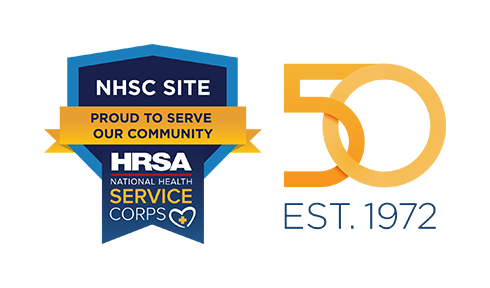Smoking Cessation
According to the Centers for Disease Control and Prevention (CDC), tobacco use is the leading preventable cause of death in the United States. More than 440,000 people in the United States die each year from smoking-related diseases, which includes various cancers, cardiovascular and respiratory diseases. Smoking cigarettes causes more deaths each year than HIV, cocaine, heroin, alcohol use, car accidents, firearm-related injuries, murder and suicide combined. If no one smoked, 132,000 (or one in three) cancer deaths in the United States would not happen. 2,3
Effects of Smoking on Your Health
Research from the CDC details how smoking cigarettes harms nearly every organ in the body and affects a person’s overall physical health - increasing the risks of heart disease, stroke and lung cancer, as well as the risk of blood clots, and emphysema. 3
People who smoke are more likely than non-smokers to become afflicted with respiratory illnesses, including pneumonia, colds, bronchitis, and sinus infections; and, it is more difficult for smokers to recover from illnesses than non-smokers. 5
People who smoke will experience chronic shortness of breath, coughing and poor circulation; this can lead to numbness or tingling in the arms and legs, and could eventually lead to gangrene. 5
Smoking cigarettes can trigger asthma attacks or make an attack worse, and makes diabetes harder to control. 2
Smoking cigarettes also increases risk for several other health factors, including fertility in men and women. Smoking can make it harder for women to become pregnant and affects men’s sperm. Additionally, smoking cigarettes increases risk for birth defects, preterm (early) delivery, stillbirths, miscarriage, low birth weight, and sudden infant death syndrome (known as SIDS or crib death). 2
Women smokers past their childbearing years have a lower bone density and are at a greater risk of broken bones than women who never smoked. 2
Smoking affects overall oral health and can cause several different issues, including bad breath, stained teeth, shrinking gums, mouth sores, decreased senses of taste and smell, poor healing of mouth sores, hairy tongue, leukoplakia, and tooth loss. Years of tobacco use can cause lingering "smoker's breath." 5,6
People who smoke also increase risks to their vision, which include developing age-related macular degeneration, cataracts (when the eye’s lens becomes cloudy, making it more difficult to see), and optic nerve damage, all of which can lead to blindness. 1,5
After years of tobacco use, fingers can become discolored. 5
What is in a cigarette?
With each puff of a cigarette, a person breathes more than 4,000 dangerous chemicals. Below is a list of some of the most hazardous chemicals according to a report from the University of Michigan Health System Comprehensive Cancer Center:
- ammonia: found in floor cleaners
- arsenic: rat poison
- butane: lighter fluid
- hydrogen cyanide: poison used in gas chambers
- formaldehyde: used to preserve body tissues
- methane: rocket fuel
- cadmium: found in batteries
- carbon monoxide: car exhaust
- acetone: poisonous solvent and paint stripper
- toluene: poisonous industrial solvent
- polonium-210: a highly radioactive element
- benzene: poisonous toxin
- DDT: highly poisonous banned insecticide
- tar: burned plant resins
- nicotine: active ingredient in some bug sprays
Ready to Quit?
Making the decision to quit can be difficult, and it is one that needs to be your decision. Although the journey to quit may be long, there are some significant benefits to think about when you consider dropping the habit:
- Your risk of heart attack drops sharply after one year of quitting. 2
- After two to five years after quitting, your risk of having a stroke declines to that of a non-smoker. 2
- By quitting smoking, you reduce the risk of mouth, throat, esophagus and bladder cancers by 50 percent. 2
- Your risk of lung cancer is cut in half after 10 years of being smoke-free. 2
Although the physical benefits of quitting are significant, you will also have a significant cost savings from $820 to over $8,000 in one year. This doesn't even include the savings from not buying lighters, ashtrays, air fresheners to cover up the smoky odor or the extra doctors visits and medications for illnesses linked to smoking. 4
It is important to remember that although this decision is your own, you will not want to take the journey to quit alone. There are several supportive resources available to help you along the way by guiding and reminding you of your goal of why you are quitting.
Free Support Resources
- University of Michigan Health System Comprehensive Cancer Center: Ready to Quit. Start by using a self-assessment to determine what type of smoker you are, then establish goals and make a plan.
- Smokefree.gov. Find support from other people just like you who did quit smoking, share your story of quitting, and enable an option to receive encouraging text messages to keep you motivated toward your goal. You can also call 1-800-QUIT-NOW (800-784-8669) or 1-855-DÉJELO-YA (855-335-3569)
- Tips From Former Smokers
- Be Tobacco Free.gov
References
- BeTobaccoFree.gov. (n.d.) Effects of Smoking on Your Health. Retrieved December 30, 2013.
- Centers for Disease Control and Prevention. (2013, December 17). Health Effects of Cigarette Smoking. Retrieved December 30, 2013.
- Centers for Disease Control and Prevention. (2013, June 25). Tobacco-Related Mortality. Retrieved December 30, 2013.
- Duffey, S.A. (n.d.) Ready to Quit?. Retrieved April 10, 2013 from the University of Michigan Health System Comprehensive Health System website.
- Duffey, S.A. (n.d.) Tobacco: How to Quit. Retrieved April 10, 2013 from the University of Michigan Health System Comprehensive Health System website.
- Tobacco and Healthy Teeth Don't Mix. (n.d.) Retrieved December 30, 2013.





